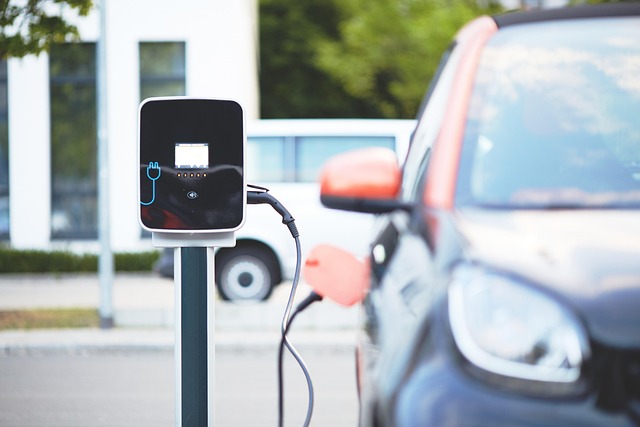Looking to register your car in California? This comprehensive guide walks you through the entire process, from understanding key requirements to paying registration fees. We break down essential steps like gathering necessary documents and performing a DMV VIN verification, ensuring a smooth experience. By following these detailed instructions, you’ll be on your way to securing your vehicle’s registration in no time.
- Understand California Car Registration Requirements
- Gather Necessary Documents for DMV Visit
- Perform VIN Verification: Steps and Importance
- Complete Application Process at the DMV Office
- Pay Registration Fees and Receive Your Certificate
Understand California Car Registration Requirements

Before registering your car in California, it’s crucial to understand the state’s specific requirements for vehicle identification number (VIN) verification. The California Department of Motor Vehicles (DMV) mandates a thorough process to ensure the accuracy and security of all registered vehicles. This involves a comprehensive VIN inspection, which checks the vehicle’s history, including its make, model, year, and any previous ownership changes.
A mobile vin verifier or mobile vin inspection service can greatly simplify this process by offering convenient on-site testing. These services utilize advanced technology to perform real-time VIN checks, ensuring that the details of your car match those in the DMV’s system. This not only saves time but also enhances security by reducing the risk of fraud or unauthorized registration.
Gather Necessary Documents for DMV Visit

Before heading to the DMV, it’s crucial to gather all the necessary documents for a smooth car registration process. This includes your vehicle’s registration certificate from the previous state (if applicable), proof of insurance, and a valid driver’s license. For a seamless experience, consider using a mobile vin verifier to obtain a digital Vehicle Identification Number (VIN) verification report. This document can often be requested online or through a simple text message service, saving you time at the DMV.
Additionally, ensure you have your car’s title handy and any other required paperwork specific to your situation, such as a bill of sale. If buying from a dealership, they may handle these details for you during the mobile vin inspection process, streamlining the registration procedure. Remember to check the DMV’s website for any updates on accepted documents or procedures before your visit.
Perform VIN Verification: Steps and Importance

Before registering your car in California, performing a VIN (Vehicle Identification Number) verification is a crucial step. This process involves checking the vehicle’s history and ensuring it meets all legal standards. You can initiate the DMV VIN verification by visiting the California DMV website or using their mobile app, which provides an efficient way to complete this task.
The procedure typically includes several steps: providing your VIN, verifying the vehicle’s details against state records, and confirming that there are no outstanding issues or recalls. A mobile vin inspection or verifications performed by authorized professionals can also be options worth considering for convenience. This step is essential as it helps prevent fraud, ensures safety, and allows you to avoid potential legal complications during the registration process.
Complete Application Process at the DMV Office

To complete the car registration process in California, you’ll need to visit a DMV office. Here, you’ll submit all required documents and pass necessary inspections, including a DMV VIN verification. This step involves cross-referencing your vehicle’s unique identifier (VIN) with the manufacturer’s records to ensure its authenticity and prevent odometer rollback.
A mobile vin verifier or inspection can also be utilized for convenience. These services allow you to conduct the VIN check outside of traditional DMV locations, offering flexibility in the registration process. Either way, ensuring your car’s history is accurate and up-to-date is essential before finalising the registration with the California DMV.
Pay Registration Fees and Receive Your Certificate

After you’ve gathered all the required documents and passed the smog test (or completed the waiver process), it’s time to pay the registration fees. The California Department of Motor Vehicles (DMV) charges a base fee for vehicle registration, which may vary based on the type of vehicle. You can usually pay online or in person at any DMV field office. If you opt for a mobile vin inspection or use a mobile vin verifier, some fees might be waived, making the process even more convenient.
Once your payment is processed, the DMV will issue your Certificate of Registration. This document officially registers your vehicle and serves as proof of ownership. It’s essential to keep this certificate with you at all times, as it’s required for displaying on your vehicle and may also be needed when dealing with insurance or selling your car. Always ensure a secure storage place for your registration documents, just like you would for other valuable papers.
Registering a car in California involves understanding state requirements, gathering essential documents, and successfully navigating the DMV process. After completing the VIN verification and ensuring all paperwork is in order, you can complete your registration at the DMV office. Remember to pay the necessary fees and receive your certificate of registration as proof of compliance with California’s regulations. This comprehensive guide simplifies the car registration process, ensuring a smooth experience for California residents.
